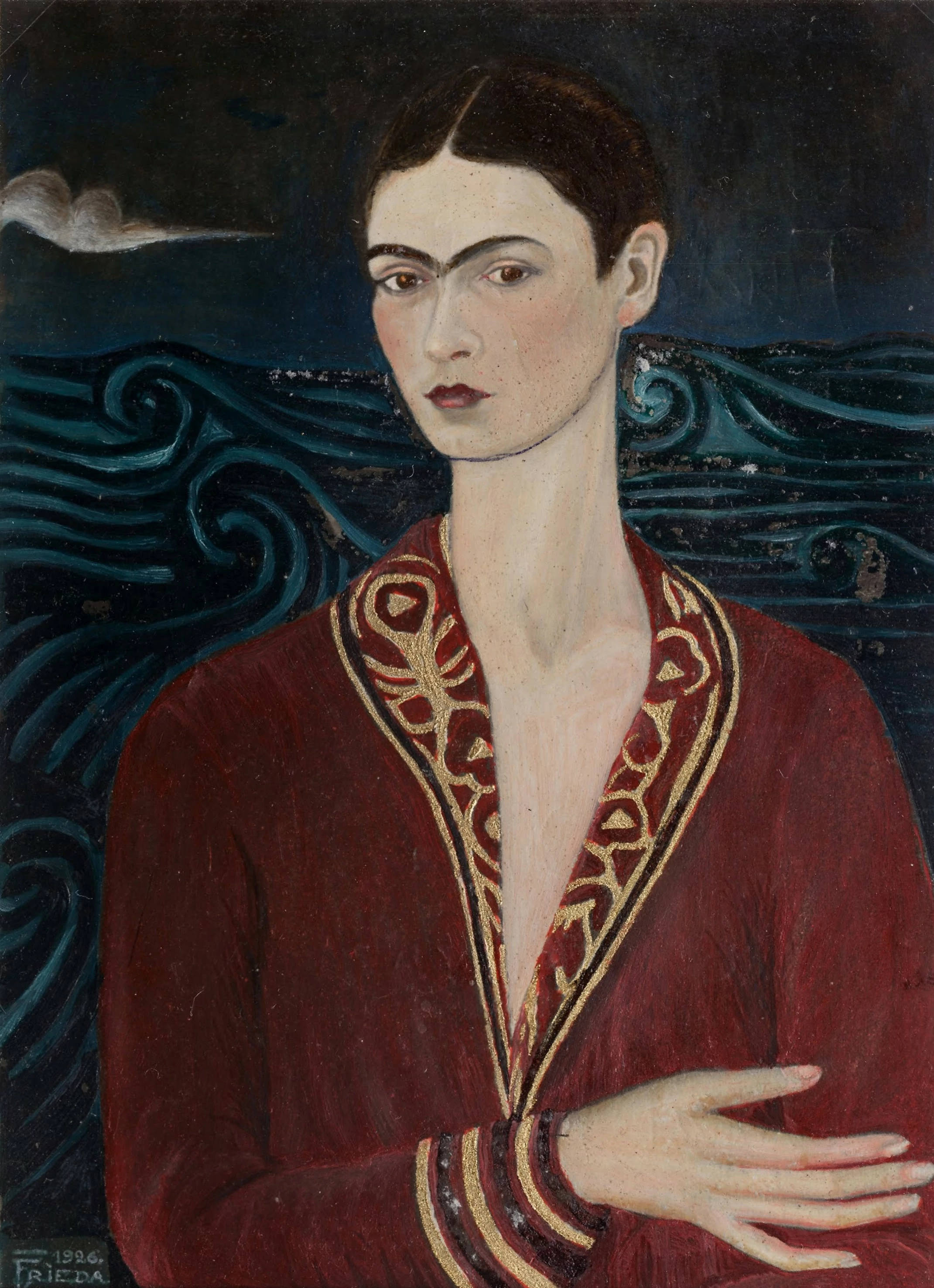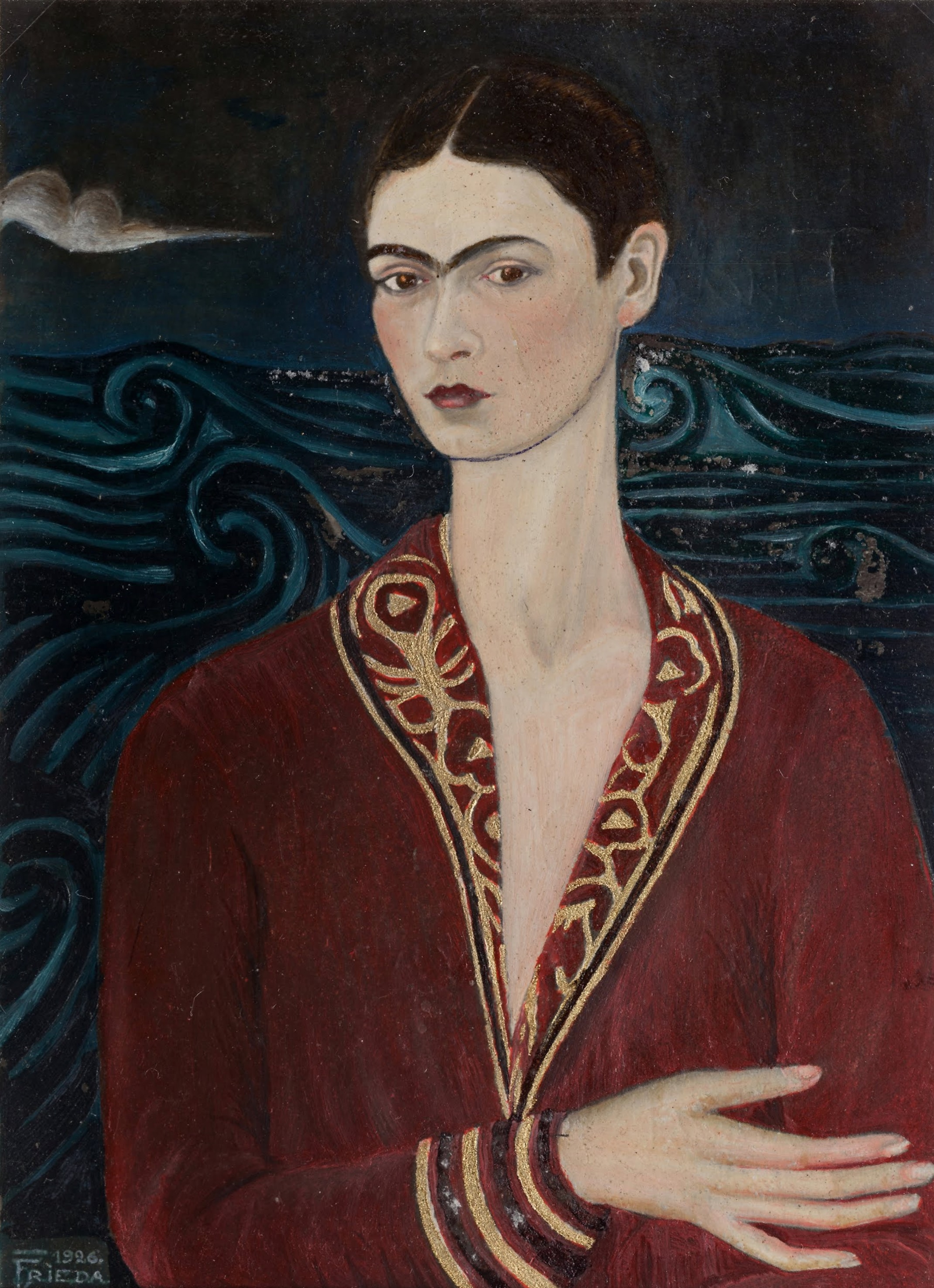


Pain defines the portraits of Frida Kahlo. The ravages of bodily damage are on display in The Broken Column and Without Hope, but Self-portrait Wearing a Velvet Dress captures the pain of being abandoned by your first teenage love.
Frida was one of 35 girls who were admitted to the prestigious National Preparatory School, where her scholarly aptitude was matched only by her passion Idigenismo, a reclamation of Mexican indigenous identity outside of colonial definition. She fell into a group of like-minded idealists who called themselves the Cachuchas, and in their informal leader found her first love, Alejandro Gomez Arias. Alejandro was slight of build, but held the iron-clad ideals of a true humanist and an unexpected penchant for public speaking. Their young romance was curtailed by Frida’s “calculating, cruel and fanatically religious” mother Matilde, and her father Guillermo. Alejandro was too political, Frida was too... Frida, and the bloody Mexican Revolution was playing out on their doorstep. It was a dangerous time for idealists.
Outside of school, Alejandro and Frida were often separated, compensating with passionate love letters, but on September 17, 1925 they had a precious day together. It was rainy, overcast, and as they boarded a bus home, Frida realized she had forgotten her umbrella. Taking another bus, they squeezed into seats near the back, and when the driver attempted to pass an oncoming streetcar, their bus was struck. Some passengers were killed instantly, others sustained fatal injuries. Alejandro was only lightly wounded, but Frida had been pierced by a steel handrail, driven through her pelvis, puncturing her abdomen and uterus, and breaking her spine in three places. Panicked, Alejandro and several onlookers attempted to help, removing the handrail, and when medics arrived Alejandro convinced them Frida was not beyond help.
Frida was hospitalized for a month, undergoing difficult and only partially successful surgical repair, and returned home bedridden in a plaster surgical support for months more. She dropped out of school, and fatefully, turned to painting during her long convalescence. While recovering, Frida wrote letters to Alejandro, describing her fear of permanent disability, and worry over the future. Alejandro did not visit her. In a desperate bid for reconnection, Frida painted Alejandro a self-portrait.
The image above is not the Self Portrait in a Velvet Dress, it is a photograph of the original that Frida later painted on to replicate it. The original painting was sent to Alejandro with the note “I implore you to put it in a low place where you can see it as if you were looking at me” and followed by another heartbreaking note the following month. “You cannot imagine how marvelous it is to wait for you, serenely as in the portrait.” A year later, in 1927, Alejandro left for Europe, and the two never saw each other again.
...
Got questions, comments or corrections about Self-portrait wearing a velvet dress? Join the conversation in our Discord, and if you enjoy content like this, consider becoming a member for exclusive essays, downloadables, and discounts in the Obelisk Store.
